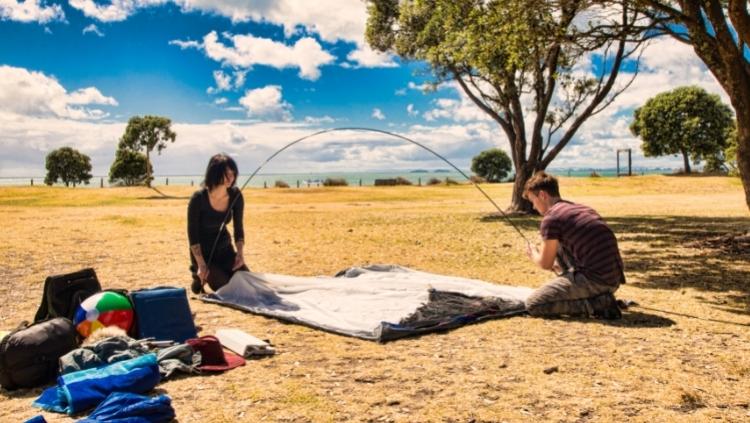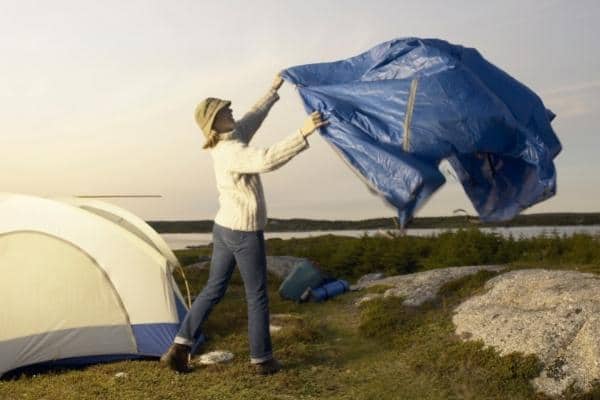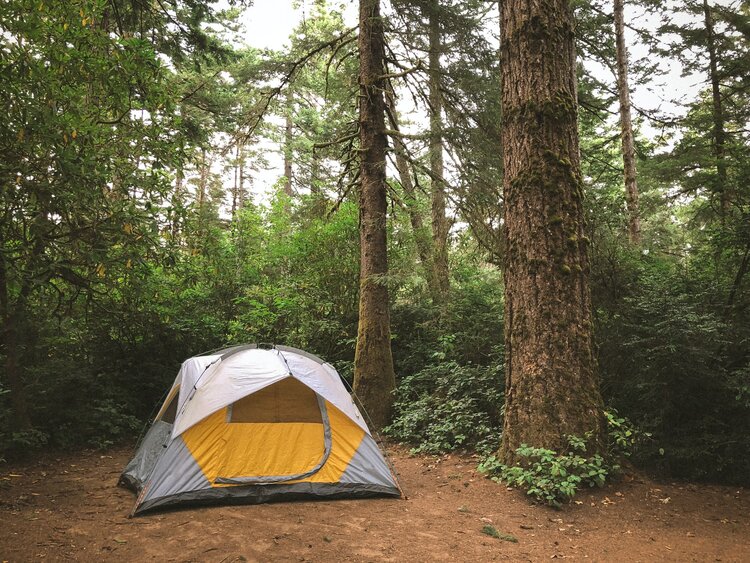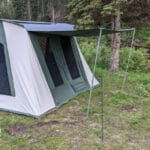More Americans are heading outdoors, and camping has become a preferred way to do that. New campers often see other, more experienced, campers setting groundsheets or tarps up under their tent and wonder why. If you find yourself in that group, you’ve come to the right place.
Although a groundsheet isn’t necessary, putting one under your tent in most camping situations is a good idea. If you’ve spent a lot of money on your tent — say upwards of $100 — or the ground is rocky or rough, you want to use a tarp, a piece of Tyvek, or a groundsheet. This will protect your investment and possibly your belongings inside.
Here we’ll break down when you need to put a groundsheet under a tent, when you don’t, and what types of tarps make the best barriers.
Why Campers Use a Groundsheet Under a Tent
Campers use a groundsheet for several reasons. Some of the most common include protecting tent material from rips and tears and improving comfort. A groundsheet can provide a little cushion under your tent. It can also add a layer of insulation on those chilly nights.
Good Groundsheet Materials
You have many options when choosing ground cover material for your campsite. The type of camping you do and where you plan to set up your tent will be significant factors in determining which material is best suited for your purposes. The following fabrics are popular choices for creating a groundsheet under a tent.
Waterproof Tarp
If your main goal is to keep moisture out of your tent and protect the more expensive material, a standard waterproof tarp is often sufficient for the groundsheet. They are inexpensive, durable, and waterproof, meeting the needs of most car and family campers.
However, tarps can be quite heavy, so they can be cumbersome if you have to hike a good distance to your campsite. In that case, consider lighter options like a footprint or Tyvek.
Canvas Tarp
These have fallen somewhat out of favor, but they are a reasonable choice if you are only concerned about protecting your tent material and the campsite is dry. In addition, canvas drop cloths have a few advantages over waterproof tarps.
For example, they are quieter, so no crinkling whenever you move inside your tent. They are generally more durable as well. Cheaper canvas tarps or drop cloths can also be lighter to carry and pack down smaller than some plastic tarps.
Tent Footprint
This is a special ground cover designed to work with your tent. Tent footprints are made from durable, lightweight materials, including nylon, Tyvek, and Polycryo. These proprietary fabrics can take the abuse of backcountry camping without weighing down your pack.
Backpackers who need an ultralight groundsheet often consider the cost of a tent footprint necessary to protect expensive backpacking gear.
Scrap of Tyvek or Housewrap
The most experienced backpackers I know don’t buy footprints made specifically for their tent model. They buy a piece of Tyvek or house wrap from their local hardware store or Amazon and cut it to size (or not).
This material is thin, super lightweight, waterproof, and durable. It’s like putting a FedEx envelope under your tent and it’s probably the cheapest way to do it. This can extend the life of the floor of a high-end backpacking tent without breaking the bank.
If you’re into ultralight backpacking, this can even help shave off a couple of ounces compared to something you buy at REI.
When You Don’t Need a Tarp Under Your Tent
While you will want to use a groundsheet under a tent in many situations, it isn’t always necessary. Consider these situations where you can skip ground protection altogether.
Car and Truck Camping
If you camp in the back of your truck or SUV, you probably don’t need to set up a tarp under the tent. The exception might be to keep cold or moisture from seeping through your tent floor.
Related: Best Canvas Tents (Hands-on Reviews)
Dedicated Tent Sites
Some campgrounds have dedicated tent sites. These are usually raised wooden platforms set near grills or fire pits. These sites are designed to accommodate larger tents and are maintained by park personnel. Therefore, they are usually free from roots, sharp rocks, and debris that can tear your tent floor. You can generally get by without a groundsheet.
However, since you’ll be able to park right near your site, you may want to have a tarp just in case. After all, rough or splintered wood can do a number to the bottom of a tent.
Smooth Campsites
Some campers are lucky enough to know exactly how the terrain will lay out. Maybe you own acreage where you like to set up a tent on the weekends, or your kids are fans of camping in the backyard over the summer.
Sandy beaches have little that could cut through your tent floor, though they might be damp.
You can probably skip a groundsheet under a tent in these situations since you have control over and knowledge of the surface before you get there.
Under Inexpensive Gear
There are some great, affordable tents out there for new campers. If there are good sales, you can go to a big box store and find a family-sized setup for $50. In that case, you probably won’t invest the same amount of money on a groundsheet to protect it. These cheaper tents often have floors made of the same material as your classic blue tarp anyway, so they tend to hold up decently well.
When to Put a Groundsheet Under Your Tent
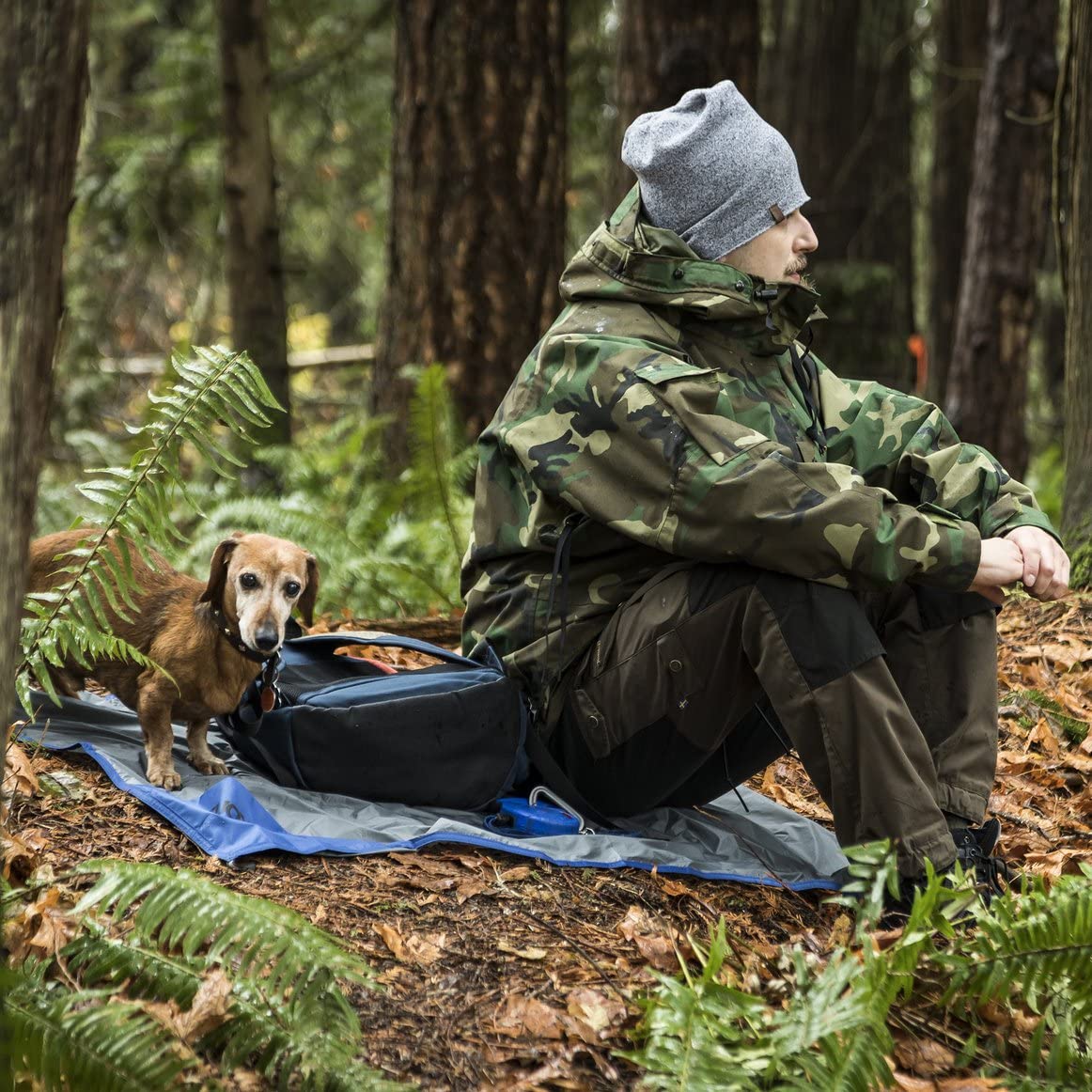
Now that you know when you can skip a groundsheet under a tent, let’s look at a few scenarios where you definitely want one.
When the Ground is Wet
This almost goes without saying, but if you set up a fabric tent over wet ground, it will come back to bite you. Having a wet tent will keep you wet and cold during your trip. It will also make packing up more difficult because now you have wet gear to deal with. Once you get home from your trip you’ll have to set up your tent again to let it dry out so it doesn’t get moldy.
If the ground is wet, use a waterproof groundsheet or tarp under the tent. This will keep the moisture contained to the groundsheet and away from your tent. Then when you’re packing up, all you have to do is let your groundsheet air out to dry while you pack up your tent.
When Backpacking
If you are heading into the backcountry with your gear in a pack, you’ll probably find a tent footprint necessary. Since you won’t know campsite conditions until you get there, it can help save your expensive lightweight gear from unnecessary wear. It will also help keep you dry if wet weather sets in.
To Retain Heat
A waterproof tarp does more than repel water; it also helps to reflect warm moisture and body heat into your tent’s interior. If you plan to camp in cooler weather, this little bit of heat retention can make a big difference in keeping you comfortable.
On Rocky Ground to Minimize Damage to Your Tent
Many camping tents are made from synthetic materials like nylon or polyester. While these are pretty durable, they can tear on sharp objects or become worn from repeated use on rough ground. Putting a groundsheet under a tent minimizes these problems and protects the tent material.
Near Your Parking Space
If you are camping at a space near your vehicle, like a park campsite, it’s good to put a tarp down. The extra weight won’t be too cumbersome since you can unload it right at your site, and the extra few minutes of work will help extend the life of your gear.
The Bottom Line
A groundsheet under a tent protects your equipment, keeps moisture out, and makes camping more comfortable. However, using one isn’t always necessary. As you gain more camping experience, you will be able to recognize when one is needed and which material is best for the given situation.
In the meantime, use these tips to help you decide.

